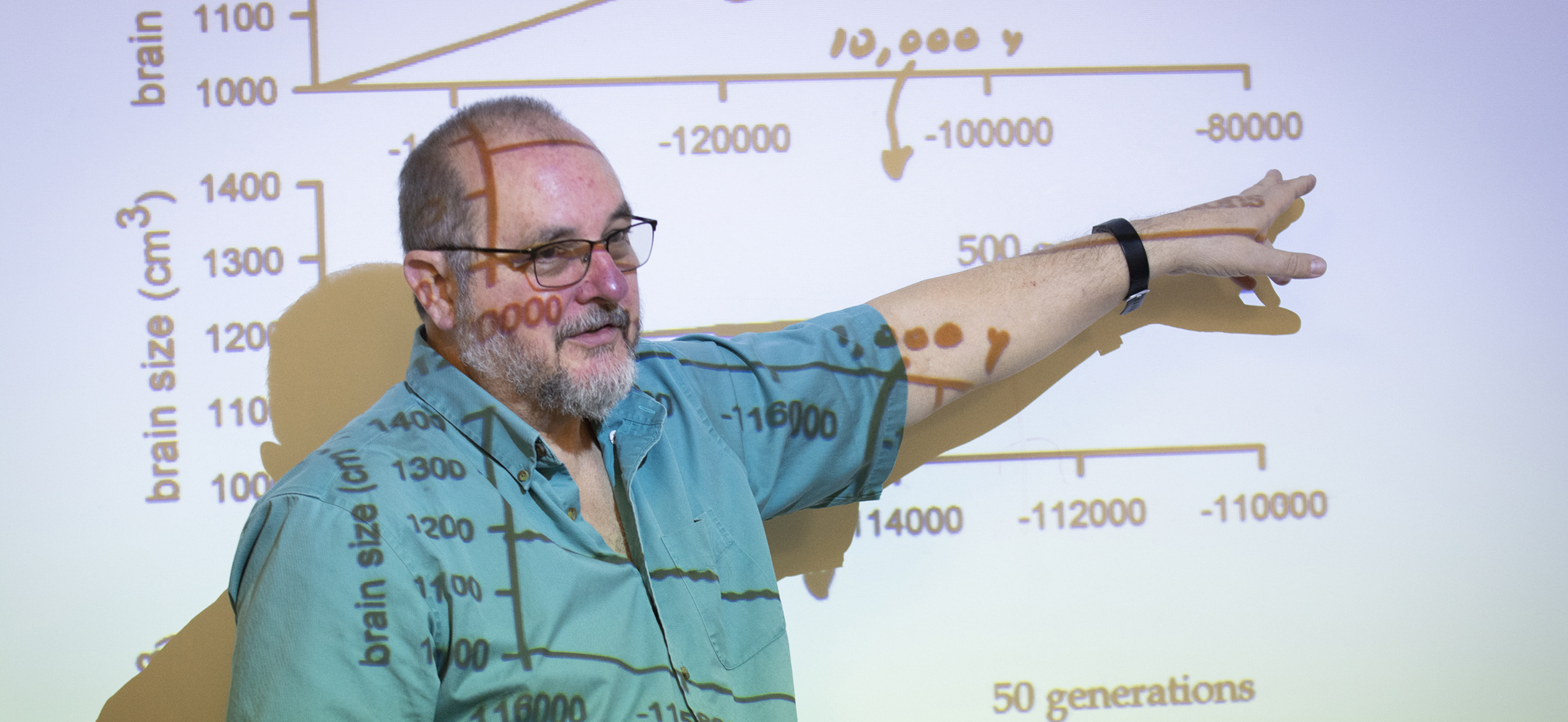Fall 2006 Asa Gray Seminars
September 18
"Population Structure and Conservation of Three Rare Butterflies"
Ernest H. Williams, Ph.D.
Leonard C. Ferguson Professor and Chair,
Department of Biology, Hamilton College
Rare butterflies often live in separate, small colonies, with limited interpopulation dispersal. To conserve such species, we must understand the factors that regulate growth of individual populations and limit the establishment of new colonies. Gillett's Checkerspot is found in the Rocky Mountains in meadow patches along streams (studied in Wyoming), while Frosted Elfin and Karner Blue butterflies occupy sandy patches in the East where wild blue lupine grows (studied in the Rome, NY, Sand Plains). Conservation of these species depends on a deeper understanding of their population dynamics. I'll describe the research underway on these insects and their habitats.
September 25
"The Relation between Cues and Perceived Stereo Depth in Relative Disparity Studies"
Yu-Chin Chai, Ph.D.
Institute for Sensory Research, Department of Biomedical & Chemical Engineering, Syracuse University
Models of stereo vision are primary models of absolute disparity. It's usually assumed that the relative disparity between two stimuli is computed simply by differencing their absolute disparities, which are the only stimulus variables included in this computation. However, previous research in our lab (VSS 2003,
2004) has shown that thresholds for discriminating relative disparity vary greatly with the similarity of stimuli on other variables, such as orientation and spatial frequency, which are independent of absolute disparity. The ongoing research uses the stereo plaids made of superimposed sinusoids to measure how perceived depth depends on the relative orientation and disparity directions. Our studies show that component orientation matters for perceived depth, even for stimuli that are not themselves obviously oriented, indicating that disparity maps onto perceived depth within orientation channels. The parameters of the 2-D disparity vector metric for determining perceived depth will be discussed.
October 16
"Hormone Signaling in Mouse Oocyte Differentiation and Follicle Formation"
Melissa Pepling, Ph.D.
Assistant Professor of Biology
Biological Research Labs, Syracuse University
Early in ovarian differentiation, female mouse germ cells develop in clusters called oocyte nests or germ cell cysts. After birth, mouse germ cell cysts break down into individual oocytes that are surrounded by somatic pre-granulosa cells to form primordial follicles. At the same time, around two thirds of the oocytes die by apoptosis with only one third surviving. The factors responsible for cyst breakdown and selective oocyte survival are unknown. Treatment of neonatal mice with natural estrogens such as estradiol, or the phytoestrogen genistein or synthetic estrogens results in abnormal multiple oocyte follicles (MOFs). To determine if genistein treatment leads to MOFs by inhibiting breakdown of oocyte cysts, mice were treated neonatally with genistein for 5 days and the differentiation of the ovary compared with untreated controls. Mice treated with genistein had fewer single oocytes and a higher percentage of oocytes not enclosed in follicles. There was also an increase in the number of oocytes that survived during the cyst breakdown period. These data taken together suggest that genistein exposure during development alters ovarian differentiation by inhibiting oocyte nest breakdown and attenuating oocyte cell death. However, the major endogenous estrogen present in the maternal circulation is 17-?-estradiol (E2). To investigate the role of E2 in cyst breakdown and oocyte survival, a neonatal ovary organ culture system was used. Newborn mouse ovaries were cultured with E2 for seven days and analyzed by confocal microscopy. In untreated ovaries, the total oocyte number dropped while the percent of single oocytes increased similar to in vivo. The E2 treated ovaries showed a similar drop in oocyte number except at the highest concentration. However, E2 treated ovaries had a significantly reduced cyst breakdown rate, manifested by persistent large cysts at PND8. E2 treatment also inhibited primordial follicle assembly. Thus, treatment with the endogenous estrogen, estradiol, inhibits cyst breakdown and at the highest concentration tested, increases cell survival supporting the model that the dramatic drop at birth in the level of estrogen that the fetus is exposed to causes oocyte cysts to begin breaking down and follicles to assemble.
November 6
"Descriptive, Experimental, and Modeling Approaches for Studying Wildlife Biology: Case Histories from the Vermont Cooperative Fish and Wildlife Research Unit"
Therese Donovan, Ph.D.
USGS Vermont Cooperative Fish and Wildlife Research Unit, University of Vermont
Understanding the factors that influence distribution, survival, and reproduction of organisms is a central question in ecology. We use a variety of scientific approaches (descriptive, experimental, and modeling) to understand how landuse pattern and management activities affect a variety of wildlife species. Descriptive studies focus on bobcats, black bears, and fisher. Experimental studies focus 1) identifying the proximate cues used by forest-nesting songbirds in selecting breeding territories, and their fitness consequences; 2) understanding how wildlife management activities alter the population
dynamics of double-crested cormorant, and 3) determining the effects of hayfield management on grassland songbirds. Overviews of these studies will be presented.

